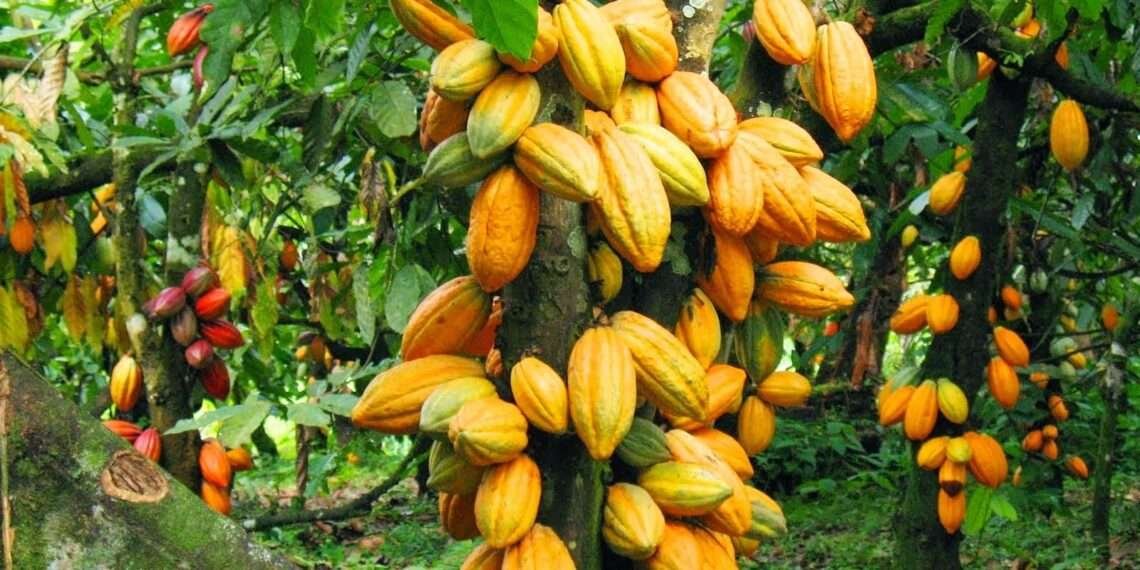Cocoa farming stands as a cornerstone of Ghana’s agricultural sector, contributing significantly to the nation’s economy and heritage. However, a report by IMANI Ghana sheds light on the challenges and opportunities faced by cocoa farmers, emphasizing the need for sustainable practices to ensure long-term profitability and environmental stewardship.
The report, titled “Profitability and Environmental Sustainability of Cocoa Farming Models in Ghana,” unveils crucial insights into the productivity of cocoa farmers across various regions of the country. According to the findings, the average productivity of a cocoa farmer in Ghana stands at 457 kg per hectare, with a median of 395 kg per hectare. While these figures depict a substantial output, a closer examination reveals disparities among different regions.
Among the regions surveyed, the Brong-Ahafo region emerges as a frontrunner, boasting the highest average yield of 628 kg per hectare. Trailing behind are the Western Region with 450 kg per hectare and the Ashanti Region with 360 kg per hectare. These regional discrepancies underscore the multifaceted nature of cocoa farming, influenced by factors ranging from climatic conditions to farming techniques.
Despite these promising figures, the report raises concerns regarding the majority of cocoa farmers in the top-producing regions, where 61% struggle with meager yields averaging 262 kg per hectare, falling below the 500 kg per hectare mark.
Moreover, only a mere 5% of farmers operate at high productivity levels, surpassing the 1,000 kg per hectare threshold. This disparity in productivity levels signals the need for targeted interventions to uplift farmers and enhance overall industry performance.
Central to the report’s objectives is the assessment of different cocoa production models in Ghana, dissecting their profitability drivers and environmental implications. Through a comprehensive survey, IMANI Ghana explores three common farming models: full sun, shaded, and high tech. Each model presents unique trade-offs, balancing factors such as yield, input utilization, labor costs, and environmental impact.
Indeed, the choice of production model becomes a critical determinant in a farmer’s journey towards profitability and sustainability. By understanding the dynamics and implications associated with each model, stakeholders can make informed decisions to optimize farm productivity while minimizing adverse environmental effects.
Targeted Interventions Aimed At Enhancing Profitability
The insights gleaned from the IMANI Ghana report pave the way for targeted interventions aimed at enhancing the profitability and environmental sustainability of cocoa farming in Ghana. By equipping farmers with knowledge and resources, fostering innovation, and promoting sustainable practices, stakeholders can work towards a resilient cocoa industry that thrives for generations to come.
In essence, Ghana is the world’s second-largest producer of cocoa, supplying 20 percent of the world’s output and the country is noted for being the producer of the world’s finest grade of cocoa beans. In spite of the importance of the crop to the Ghanaian economy, the cocoa industry is faced with many challenges. These include underpaid cocoa farmers leading to the general dissatisfaction of the cocoa producer price, high cocoa yield gap, reduction in cocoa production, erratic supply of subsidized inputs, financial performance of COCOBOD and the management of revenue from the cocoa production among others.
As stakeholders unite in pursuit of sustainable growth, the path towards a prosperous and resilient cocoa industry becomes clearer, promising a brighter future for farmers and communities alike.
READ ALSO: Mixed Trading Day at GSE Sees Unilever Ghana Emerge as the Star Performer



















